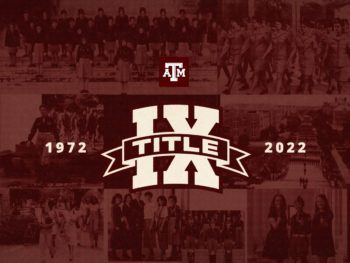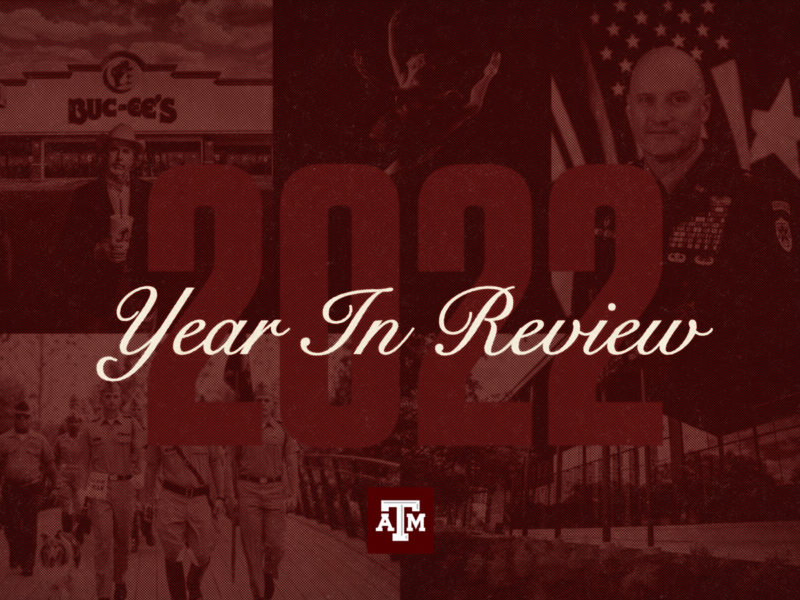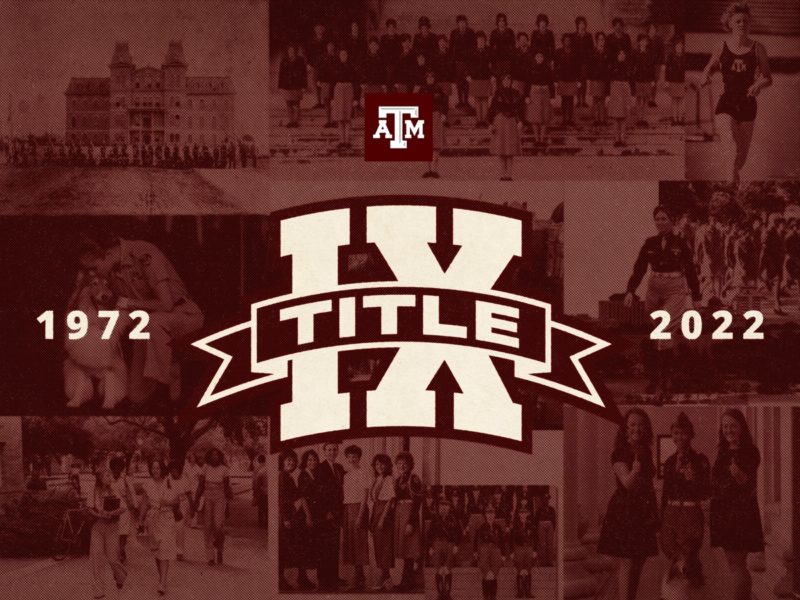How Does The Title IX Investigation Process Work At Texas A&M?

Editor’s note: This story is part of an occasional series about the impact of Title IX.

It’s been 50 years since Title IX — the historic civil rights legislation that opened countless opportunities for women in higher education — was signed into law by President Richard Nixon. Texas A&M Today spoke with the university’s Title IX Coordinator Jennifer Smith, an attorney who has spent much of her career working to protect civil rights. She shares some of the lesser-known history behind the law, how the Title IX investigation process works, and what Aggies can do to protect themselves and one another.
What is Title IX?
Title IX is a federal civil rights law passed in 1972 that protects everyone from unlawful discrimination on the basis of sex. In addition to requiring equitable opportunities for participation in university programs and activities (like athletics, housing and admissions), Title IX prohibits sexual assault, sexual harassment, dating/domestic violence, stalking and sexual exploitation. Any school that receives federal funding must comply with Title IX.
Who can make a report?
Any person – including campus visitors, parents or vendors – may report sex-based discrimination, harassment or violence. However, all full and part-time A&M employees (defined as anyone who receives a paycheck or a stipend, regardless of their status as a student worker, faculty or staff) must report Title IX incidents. As “mandatory reporters,” employees who observe, experience or become aware of a Title IX-related incident in the course and scope of employment are required to report all known information to the Title IX coordinator. Employees who are licensed medical personnel, like the counselors at Counseling and Psychological Services (CAPS) or the physicians at A.P. Beutel Health Center, are confidential and only submit de-identified statistics as their mandatory reports.
How do people make a Title IX report at Texas A&M?
As Title IX coordinator, I am responsible for receiving and resolving complaints, and ensuring the university complies with Title IX. You can email civilrights@tamu.edu, call 979-458-8407, submit a report on our website, titleix.tamu.edu, or walk in to the Title IX Office in the YMCA building and meet with a case manager.
I’ve filed a report. What happens next?
After we receive a report, a case manager will contact the person who was affected by the reported behavior. The individual will be given information about their rights in the university’s Title IX process and options for resolving their complaint.
What supportive measures are available for the person who reports? Is there support for accused parties?
Case managers can connect affected individuals with on-campus and community resources for counseling, medical care, support and advocacy. They also provide supportive measures on a case-by-case basis. These options include assisting an individual with changes in work, housing or parking locations, academic adjustments, and the provision of a mutual “no contact” directive, available to prevent direct or indirect contact between two identified parties.
These supportive measures are available equally to both the person affected by the behavior and the accused party. The person affected by the behavior is also informed of their right — but not responsibility — to file a complaint with police if the reported behavior could be a violation of criminal law.
Does the university automatically pursue discipline once they receive an initial report?
No. The new federal regulations prohibit the university from moving forward until the person affected by the behavior files a signed, formal complaint requesting an investigation. That means when we receive an anonymous allegation of sexual assault, for example, the university usually cannot open an investigation because we do not have a signed, formal complaint from the person affected by the behavior. Another common scenario occurs when a student verbally reports a Title IX incident to a case manager, but does not follow up with returning the formal complaint form requesting an investigation. Even though the university is aware of the allegation of misconduct, we cannot move forward without the written request for action from the affected individual.
What is the typical timeline of a Title IX case?
The timeline for resolving a complaint depends on the resolution selected by the person affected by the behavior. After a formal complaint has been filed and the university determines that a university rule may have been violated, the person affected by the behavior has the option to select a formal or informal resolution. They may also decide not to pursue any resolution at that time.
If the formal option is selected, the university will assign an investigator who will gather evidence and information about the allegation. Once the investigation is complete, the investigator writes a report which contains all inculpatory and exculpatory evidence that was collected. The parties have the chance to review and respond to the report, which may trigger further investigation. Once the report is finalized, it is sent to a hearing officer who conducts a live hearing. If a party does not have an advisor, the University will provide one free-of-charge. The advisor’s job is to provide support and advice to their party and to cross-examine the other party at the hearing. If the accused party is found responsible for violating the university’s rules, the sanctions could include a reprimand, probation, suspension or expulsion. The formal resolution process often takes one to two semesters to complete.
If the informal option is selected, the Title IX coordinator will contact the accused party and determine whether they wish to participate in the informal resolution process. If both parties agree to attempt an informal resolution, they will meet with a trained mediator who will assist the parties in reaching a mutually agreeable resolution to the allegations. Although informal resolution agreements are very flexible, such agreements often contain requirements for restitution, educational activities, findings of responsibility, and sanctions. If both parties do not agree to attempt informal resolution, or if the parties fail to reach an agreement at the informal resolution meeting, the university will proceed with the formal process described above. Informal resolutions often take one week or less to complete.
If a student admits to underage alcohol or drug use while reporting an alleged Title IX violation, can the student be disciplined for drug or alcohol violations?
No, Texas A&M provides amnesty.
What was happening at the time Title IX was passed?
Title IX’s first “big splash” was that it increased opportunities for women to participate in athletics at universities. But if you go back and look at the people who worked in Congress to pass this law, they weren’t thinking specifically about athletics when they passed it. Patsy Mink, congresswoman for Hawaii (1965-77), was one of the authors and sponsors of Title IX. Even though she was valedictorian of her high school class and had bachelor’s degrees in chemistry and zoology, dozens of medical schools refused to admit her in 1948 because she was female. She decided to go to law school, instead, so she could learn how to challenge discrimination and create opportunities for women. After she graduated from the University of Chicago Law School, one of the only law schools in the country that accepted women at the time, she soon ran for Congress.
As the drafter of Title IX, she was originally trying to level the playing field in admissions, but Title IX today has been interpreted to compel equitable opportunities for females in every school program or activity – opportunities to attend the university, play sports, participate in student organizations, work on campus, receive financial aid and live in on-campus housing. Virtually every area that the university touches, Title IX is there.
How can Aggies work to support Title IX on campus?
A&M has the Step In Stand Up campaign which sponsors bystander intervention programs for faculty, staff and students. It’s a great program that teaches people how to step in when they see something that shouldn’t be happening, and to intervene in certain situations to help keep our community safe.
With the fall semester just now under way, we are promoting awareness of the Red Zone.
Fifty percent of sexual assaults of college campuses occur during the Red Zone, the time period between the start of classes and Thanksgiving break. Students, particularly new students, should watch out for each other and live by the Aggie Core Values.
Media contact: Lesley Henton, lshenton@tamu.edu





